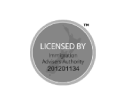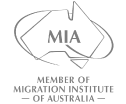Australia’s permanent migration program maintains a delicate balance between addressing critical skill shortages and preserving family reunification opportunities, with 52,500 family visa places allocated in the 2024-25 Migration Program[1][3]. For skilled professionals securing permanent residency (PR), understanding family sponsorship mechanisms becomes crucial to leveraging Australia’s 70:30 skilled-family migration split while maintaining career progression.
Core Family Sponsorship Streams
Partner Visa (Subclasses 309/100 and 820/801)
The demand-driven Partner visa program allows PR holders and citizens to sponsor spouses or de facto partners through a two-stage process:
- Temporary Visa Phase: Initial grant with full work rights
- Permanent Residence: Available after 2+ years of continued relationship evidence
Recent reforms prioritize applications with dependent children and those demonstrating long-term financial interdependence[1][4].
Parent Visa Options
With 8,500 places allocated annually[1], PR holders can choose between:
Contributory Parent (Subclass 143)
- Cost: AUD 47,455 main applicant
- Processing: 12-24 months
Aged Parent (Subclass 804)
- Requires parent to be old enough to claim Age Pension
- No second installment charge but longer processing times
Child Visa (Subclass 101)
The demand-driven child visa program prioritizes:
- Biological/adopted children under 25
- Orphan relatives under 18
Documentation must prove dependency and parental responsibility[1][5].
Strategic Considerations for Skilled Migrants
Balancing PR Eligibility and Family Planning
The points test now awards bonus points for regional employment, creating scenarios where:
- Primary applicants secure PR through skilled visas
- Secondary applicants use family streams for extended relatives
- Subsequent sponsorships activate after 5-year residency requirements
Financial Assurance Mechanisms
Assurance of Support (AoS) requirements for parent visas now include:
- 10-year financial liability period
- AUD 15,000 bond for couples
- Mandatory Centrelink assessments[4][5].
Emerging Challenges and Solutions
Processing Time Optimization
Current averages:
| Visa Type | Processing Time | Success Rate |
|---|---|---|
| Partner (Offshore) | 15-24 months | 82% |
| Contributory Parent | 12-18 months | 91% |
| Child | 8-12 months | 96% |
Strategies to accelerate processing:
- Front-loaded medical examinations
- Pre-translated documents through NAATI-certified services
- Strategic use of migration agents for complex cases[4][5].
Health and Character Requirements
2025 reforms introduce:
- Expanded health waiver criteria for non-threatening conditions
- Stricter character assessments for sponsors
- Mandatory police clearance translations through approved channels[1][4].










